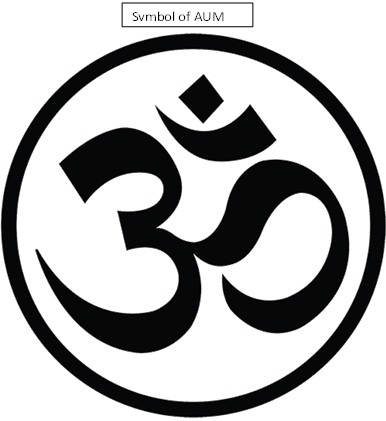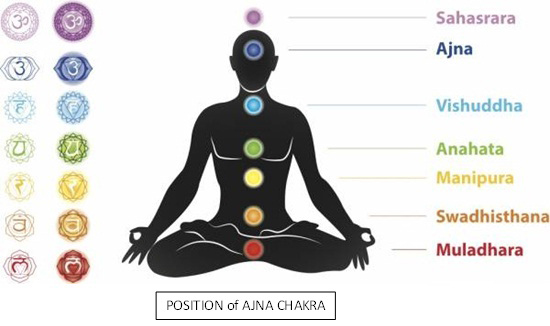
Inderdeep Kaur
Associate Professor, Department of Botany, University of Delhi,Delhi 110 007, India.
ABSTRACT
In times of integrative medicine which focuses on the health of mind, soul and body, we are making an effort towards finding happiness and well-being through various ways. Of late more and more people are getting attracted by a combo of both conventional and alternative techniques. Meditation, an alternative therapy has been a Hindu practice for thousands of years that helps in destressing and better coordination of mind and body. Meditation is the method of observing the inward and outward movement of thoughts that come and go out of mind with silence (maunum), stability (dhiram) and detachment (vairagyam). The Maitri Upnishad, one of the religious scriptures says, ‘it is with mind truly that one sees, it is with mind that one hears; desire, imagination, doubt, faith, steadfastness, shame, meditation, fear—-all this is truly mind’. Meditation through chanting of mantra is an ancient practice which has picked up around the world. Chanting a word or a phrase, the mantra repeatedly and rhythmically either loudly by a person or sung in unison by a crowd leads to establishing a connection with God.
Chanting meditation is followed by many around the globe for fighting stress in day to day life, especially in keeping diseases like Alzheimer’s and dementia at bay. But unfortunately it has gained popularity more because of health and fitness centers which give only a broad perspective of chanting. However, we must know how this repetition of mantra influences our endocrine system and the nervous system. We also should understand the cross talk that occurs between these two systems and the benefits arising out of it.
This article is written with the aim of disseminating the knowledge in a more scientific manner so that while practicing chanting one understands the changes that occur in one’s mind and body.
Introduction
Stress has become an ingrained part of our vocabulary and daily existence and it is difficult to believe that the term coined by Hans originated only a little more than 50 years ago. It is a physical, mental or emotional state which a man experiences when his demands exceed the social resources a person can mobilize. Since bad stress takes toll on our total personality and our survival, we make every effort to maintain a healthy body, a sound mind and a strong emotional quotient. Dhyaana a Sanskrit word where ‘Dhi’ means receptacle or the mind and ‘yana’ means moving or going. It is meditation with an unbroken focus of mind on its object. Dhyaana is movement or journey of mind, a mental activity of mind that leaves our body rejuvenated and relaxed.
Chanting
It is a technique to reach the subconscious through mantra japa which means the repetition of a word or an idea or a phrase to purify the subconscious mind of the seeker. Chanting is a psychological fact that infuses mind with good thoughts, outlook and adds values to life. Chanting a mantra can help you tune out of the world and tune into yourself for close introspection.
Much like the emotive quality of immersing oneself in music, mantra uses sound to evoke moment of physical and emotional energy through stimulation of nervous system, from which emerges meanings and narrative.
To be more precise when we pronounce mantra, our tongue taps against certain points of the upper palate, sending signals to the hypothalamus, the control power of the brain, which regulates communication between nervous and endocrine system.
Chanting induces a hypometabolic state characterized by decreases in many physiological measures as well as by changes in EEG pattern. There are reports of increase in cerebral blood flow to frontal cortex during meditation. Neuroscientists observing MRI scans have learned that meditation strengthens the brain by reinforcing the connections between the brain cells. A direct correlation was found between the amount of insular gyrification and number of meditation years [1].
AUM centric meditation
For any mantra to be effective we must remember two aspects; one the meaning which has to be imbibed and second the pronunciation which should strike the right cord with the nervous system. AUM has various interpretations.
A; is jeevathmaa’s conscious state, U is jeevathmaa’s dreamy state and M is jeevathamaa’s superconscious state. It is also believed that A is past, U is present and M is future. The other interpretation of AUM is that three alphabets symbolize earth, atmosphere and heaven and three major Hindu gods: Brahma. Vishnu, Shiva and the three sacred vedic scriptures: Rig, Yajur, Sama. In other words AUM embodies the essence of the entire universe.

AUM is a special mantra with cosmic vibrations in it [2]. It has been referred to as the password to enlightenment, a sacred syllable and symbol that encapsulates secrets of the universe and influence all areas of life. AUM is also the primordial hum, the ANHAD sound from which all other sounds and forms arise and return to. According to Swami Sivananda “the whole world has come from AUM, rests in AUM and dissolves in AUM.” The understanding of linguistics and phonetics of AUM is extremely important. It is believed that if recited correctly then A can have a broader vibratory effect on the physical body, U has a funneling effect, narrowing the consciousness into subtler sensations and nasal M sound makes cranium vibrate and has eternal effect on the Ajna Chakra (one of the seven energy chakras of body). This last vibration caused by elongated mmm… is of highest importance. It is the point where the veil between audible sound and supreme stillness is thinnest. And it is the time when our listening awareness is most expansive.
“A” has first place in all alphabets and “m” is the last letter in the oldest language- Sanskrit while from start to end are the terms from alpha to omega and from A to Z. The first sound uttered as babies emerge from the womb is often “Ahhh.” Hence the letters “a” and “m” are symbolic of the continuous cycle of birth, life and death, known as samsara in Sanskrit. Phonetically, AUM is a very natural and effortless sound to form. While chanting, the peripheral nervous system (PNS) gets activated and regular meditators experience the vibrations of the physical body manifest as wonderful astral sounds to the spinal centers. As we continue chanting AUM, our mind becomes calm and our mind and body relax. There is coordination between the right and left hemisphere of the brain. It activates areas of bilateral cerebellum, left middle frontal gyrus and right precuneus [3].

Chanting AUM loudly and repeatedly leads to resonation of eternal sound in the ears and air flows through the nasal passages smoothly between three sounds [4]. When repeated with clear intonation AUM aligns us at all three levels- physically, mentally and spiritually.
The ‘A’ awakens consciousness
The ‘U’ uplifts awareness
The ‘M’ merges one with the supreme reality.
Effective ‘AUM’ chanting is associated with the experience of vibration sensation around the ears. It is expected that such a sensation is also transmitted through the auricular branch of the vagus nerve [5].
References
- http://io9.gizmodo.com/how-meditation-changes-your-brainand-makes-you-feel-b-470030863
- http://www.yogananda.com.au/pyr/pyr_AUM
- http://www.outlookindia.com/magazine/story/an-omnipotentquest/294134
- http://health.usnews.com/health-news/blogs/eat-run/2013/10/02/your-brain-on-om-the-science-of-mantra
- Bangalore G Kalyani, Ganesan Venkatasubramanian, Rashmi Arasappa, et al. Neurohemodynamic correlates of ‘OM’ chanting: A pilot functional magnetic resonance imaging study. Int J Yoga. 2011; 4: 3-6.



